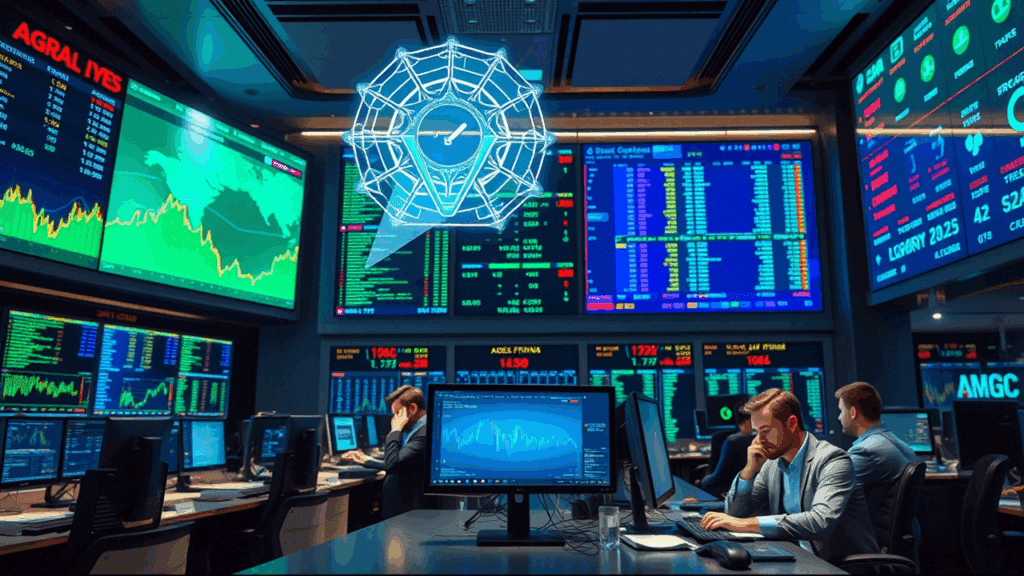Think your favorite trading guru has the edge? Think again. The cold, calculating power of algorithmic trading isn’t just disrupting markets – it’s devouring them. Human emotion? Out. Lightning speed? In. Learn why the future belongs to the code, and why sticking to manual trading is a fast track to financial oblivion.
Let’s cut the crap. For years, the internet has been flooded with ‘gurus’ promising secret strategies, exclusive indicators, and insider wisdom that will make you rich overnight. They flash fancy cars, rented mansions, and charts that look suspiciously like they were drawn after the fact. They sell courses, newsletters, and dreams of financial freedom fueled by gut feeling and mystical chart patterns.
But while you’re watching their webinars and trying to decipher their spaghetti charts, something far more powerful, far more ruthless, is quietly eating their lunch, your lunch, and everyone else’s lunch: The Algorithmic Overlords.
The Dawn of the Machines: Why Algos Reign Supreme
Trading used to be a gentleman’s game, or at least, a human’s game. You watched the news, read charts, felt the market’s pulse, and made your move. It was slow, often emotional, and prone to error. The gurus thrived in this environment, spinning tales of intuition and experience.
Then came the code. Not just simple trading bots, but sophisticated algorithms running on high-frequency trading platforms, executing millions of trades per second. These aren’t just tools; they are autonomous entities designed for one purpose: extracting profit from market inefficiencies at speeds no human could ever comprehend.
Speed Kills (Your Manual Edge)
Imagine you see an opportunity. By the time you’ve processed the information, decided on your entry, and clicked the button, the algo has already seen it, calculated the optimal trade size, executed, and potentially even exited. We’re talking microseconds vs. seconds or minutes. It’s not a fair fight; it’s a slaughter.
Data is Their Oxygen
Gurus rely on a few indicators, perhaps some economic calendars, and their ‘feel’. Algos? They process vast oceans of data in real-time: news sentiment, social media trends, macroeconomic indicators, order book depth, dark pool activity, correlations across thousands of assets. They find patterns invisible to the human eye and exploit them instantly.
Emotion is a Human Flaw
Fear, greed, panic, hope – these are the trader’s worst enemies. They lead to impulsive decisions, holding losers too long, cutting winners too short, and blowing up accounts. Algos? They have no emotions. They execute their strategy with cold, calculated precision, every single time. No sleepless nights, no revenge trading, just pure, unadulterated logic.
Infinite Stamina, Zero Distractions
A human trader needs sleep, food, breaks, and can be distracted by life. An algo runs 24/7, tireless and focused only on the market data. While you’re celebrating a win or sulking over a loss, the algos are already on the next trade, grinding out profits.
The Guru is Dead, Long Live the Code
So, where does this leave the traditional day trader and their charismatic guru leaders? Increasingly, on the losing side of a game they can no longer compete in. The strategies that might have worked five, ten, twenty years ago are becoming obsolete in a market dominated by machine intelligence.
Does this mean discretionary trading is impossible? No. But the edge has shifted dramatically. Relying solely on manual charting and gut calls against algorithms processing exabytes of data at nanosecond speeds is like bringing a knife to a gunfight – a very fast, very big gunfight.
The Illusion of Control
Many gurus sell the idea of ‘mastering’ the market through complex manual techniques. The uncomfortable truth is, in high-speed environments, you’re not mastering the market; you’re reacting slowly to its surface movements while the real action, driven by algorithms, happens beneath the waves.
Types of Algorithmic Dominance
The term ‘algorithmic trading’ isn’t monolithic. It encompasses a wide range of strategies, each designed to exploit specific market dynamics:
- High-Frequency Trading (HFT): The speed demons. Exploiting tiny price differences across markets in milliseconds.
- Statistical Arbitrage: Finding pairs or groups of assets that historically move together and trading deviations from that correlation.
- Trend Following: Identifying and riding market trends, but executing entries and exits algorithmically based on quantitative rules.
- Mean Reversion: Betting that prices will return to their historical averages after a deviation.
- Sentiment Analysis: Trading based on analysis of news headlines, social media posts, and other text data.
- Market Making: Providing liquidity by placing limit orders on both sides of the order book, profiting from the bid-ask spread.
These strategies are not static; they are constantly evolving, being optimized, and adapting to changing market conditions. They are built on rigorous quantitative analysis, backtesting, and relentless execution.
Adapt or Become Market Roadkill
If the machines are taking over, what’s a human trader to do? You have a few stark choices:
- Refuse to Adapt: Keep trading manually, relying on outdated techniques. Watch your edge erode and your account dwindle. This is the guru’s path to irrelevance.
- Become a Better Human Analyst: Focus on longer-term strategies where the speed advantage of HFT is less critical. Develop deep fundamental analysis skills or identify unique market opportunities that algos might miss (increasingly difficult).
- Learn to Code (or Partner Up): Embrace the machines. Start learning Python, explore algorithmic trading platforms, understand how to backtest strategies, and build your own automated systems. This is the path to survival and potential dominance.
- Leverage Algos Built by Others: Use platforms or services that provide access to algorithmic strategies (with extreme caution and due diligence). Don’t just follow random signals; understand the logic behind the algorithms you potentially deploy.
The era of the lone wolf trader relying solely on intuition is fading. The future belongs to those who can leverage technology, data, and quantitative methods.
The Inevitable Future: Code is King
Algorithmic trading isn’t going anywhere. It’s becoming more sophisticated, more pervasive, and more dominant. Financial institutions are pouring billions into AI and machine learning for trading. The gap between institutional algo power and retail manual trading is widening into a chasm.
This isn’t a scare tactic; it’s a market reality check. The gurus selling you simple patterns and emotional mastery are selling you a fantasy. The real power lies in the code, the data, and the relentless, emotionless execution that only machines can provide.
Stop chasing the ghost of manual trading glory. Look to the future. Understand the algorithms. Adapt your approach. Or prepare to be a footnote in the history of markets conquered by code.
The Algorithmic Overlords have arrived. Resistance is futile. Adaptation is your only hope.
Ready to ditch the gurus and understand the real market drivers? Explore our guides on quantitative analysis and algorithmic trading fundamentals.



